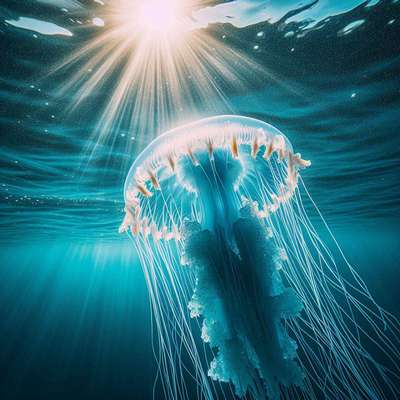Introduction to the Dietary Habits of Jellyfish
Most jellyfish are carnivorous, primarily consuming planktonic organisms ranging from microscopic to a few millimeters in size. Their diet includes both zooplankton and phytoplankton, with larger species capable of ingesting small fish and crustaceans. Jellyfish use their tentacles, which can extend up to 100 feet in some species, to capture prey using specialized stinging cells called nematocysts.
Remarkably, jellyfish can consume up to 10 times their body weight daily. The lion's mane jellyfish, the largest known species, can grow to 8 feet in diameter with tentacles reaching 120 feet, allowing it to catch more substantial prey. Some jellyfish species, like the upside-down jellyfish, have a symbiotic relationship with algae, deriving up to 169% of their daily carbon requirements from these photosynthetic partners.
Remarkably, jellyfish can consume up to 10 times their body weight daily. The lion's mane jellyfish, the largest known species, can grow to 8 feet in diameter with tentacles reaching 120 feet, allowing it to catch more substantial prey. Some jellyfish species, like the upside-down jellyfish, have a symbiotic relationship with algae, deriving up to 169% of their daily carbon requirements from these photosynthetic partners.
Importance of Understanding Jellyfish Feeding Patterns
Understanding jellyfish feeding patterns is crucial for marine ecologists and enthusiasts alike. These enigmatic creatures play a pivotal role in the ocean's delicate balance. With over 90% of their diet consisting of plankton, comprehending their feeding habits aids in deciphering marine ecosystem dynamics.
Additionally, their impact on fish populations underscores the interconnectedness of underwater life. By delving into the specifics of what and how they eat, we gain valuable insights into preserving the health and harmony of our oceans. It's not just about jellyfish, it's about sustaining the intricate web of marine life.
Additionally, their impact on fish populations underscores the interconnectedness of underwater life. By delving into the specifics of what and how they eat, we gain valuable insights into preserving the health and harmony of our oceans. It's not just about jellyfish, it's about sustaining the intricate web of marine life.



